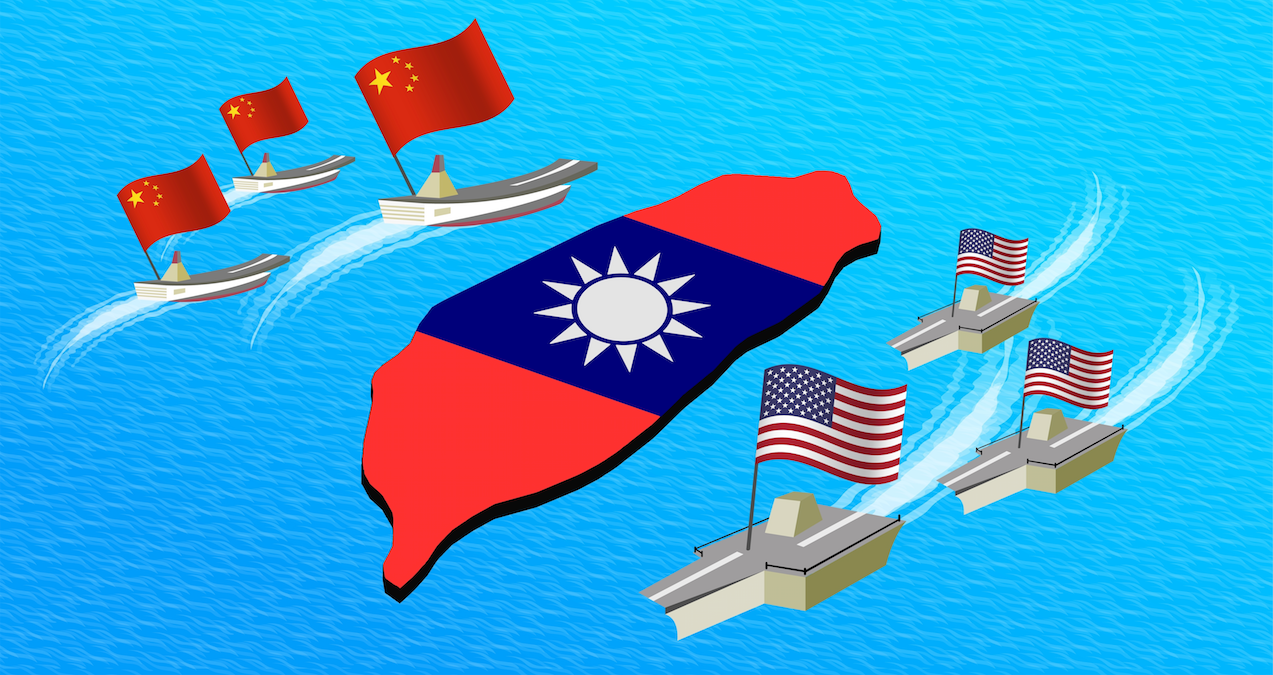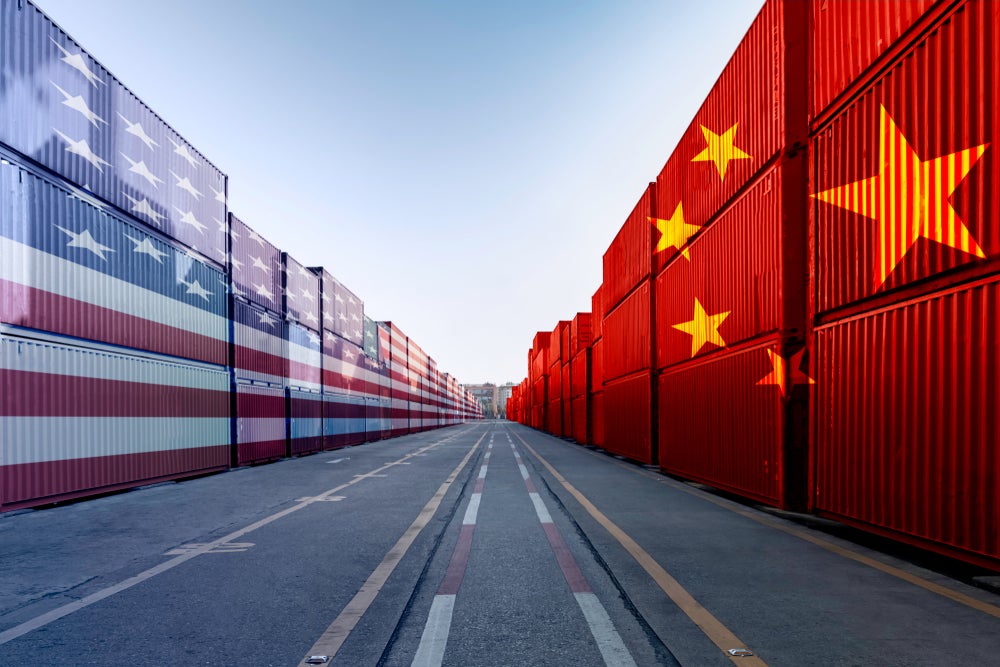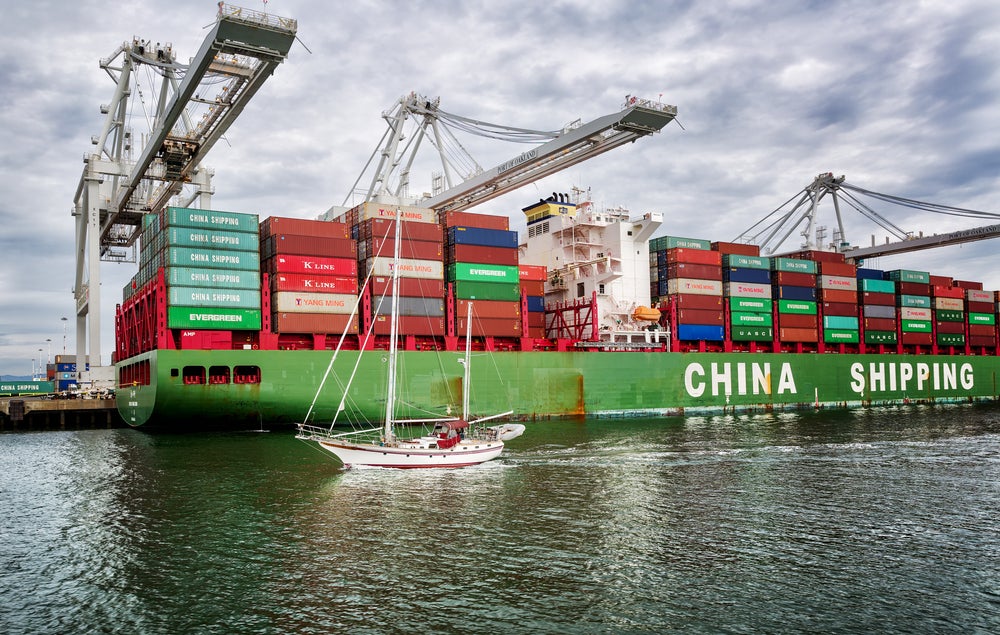As the danger of war rises in the Western Pacific, the United States is racing to reset its military strategy. China’s astonishing military modernization—especially its arsenal of anti-access/area denial (A2/AD) capabilities—has fundamentally challenged the old U.S. approach, which focused on defeating aggression by projecting decisive power into the first island chain. In response, the Pentagon is attempting a great inversion: to defeat Chinese power projection against Taiwan or another target, it is emulating Beijing’s A2/AD strategy in hopes of making the Western Pacific a no-go zone for hostile forces.
This change, which some defense analysts have advocated for years, is a necessary response to China’s daunting capabilities. It is a smart effort to make the geography of the region, and the inherent difficulty of power projection, work for, rather than against, the United States and its allies. Speed is essential in making this shift: Even as the stated U.S. view is that conflict is “neither imminent nor inevitable” in the Taiwan Strait, numerous U.S. officials have warned that conflict could plausibly occur in the region this decade. This urgency is catalyzing constructive action across multiple U.S. alliances and every U.S. military service as they seek to make the strategy real in the limited time that may be left.
Every strategy brings dilemmas, though, and this strategy—call it “anti-access with American characteristics”—presents six crucial trade-offs the Pentagon and U.S. civilian leaders must address. Many of these challenges, moreover, must be confronted in coordination with U.S. allies and partners, but these conversations are not as advanced as they should be given the shrinking timeline and urgency of action. Strategy is the art of making hard choices, and the United States is only starting to reckon with the hard choices its new strategy involves.
Washington’s Strategic Shift
U.S. strategy has been turned upside down by two key developments: China’s ballooning defense budget and its military-technological breakthroughs. Using defense resources made available by decades of rapid economic growth, the People’s Liberation Army (PLA) has developed a vast arsenal of capabilities—especially long-range missiles—designed to prevent U.S. forces from accessing bases along the Pacific’s first island chain, as well as in the waters and airspace within them. According to the Pentagon’s most recent public report on Chinese military power, for instance, Beijing now possesses roughly 1,000 medium-range ballistic missiles with a range of between 1,000 and 3,000 kilometers and 500 intermediate-range ballistic missiles with a range of between 3,000 and 5,500 kilometers. If a war were to break out, the PLA could now target nearly all U.S. forces within hundreds of miles of the Chinese coast.
|
03/12/2024 | Hal Brands & Zack Cooper | Center for Strategic and International Studies (CSIS) |
Without Robust Trade Policy, U.S. China “De-Risking” Falls ShortThe following is an excerpt from a piece by Naomi Wilson published by the Information Technology Industry Council’s TechWonk Blog. The Biden Administration may have pronounced trade agreements passe, but the global picture (and U.S. allies) says otherwise. China maintains over a dozen bilateral and multilateral agreements worldwide, several of which were concluded within the past five years. In 2020, 15 countries, including China, concluded the largest multilateral trade agreement to-date, the Regional Comprehensive Economic Partnership (RCEP), representing nearly one-third of the world’s population and GDP. The agreement lowers or eliminates tariffs on goods and services and establishes rules on investment, competition, IP, and digital copyright. By contrast, the U.S.-led Indo-Pacific Economic Framework for Prosperity (IPEF) offers U.S. partners none of these benefits. By emphasizing enforcement and “de-risking” without an equally robust trade policy, the U.S. government runs the risk of pushing supply chains too far without appropriately guarding against unintended consequences and facilitating a safe “landing zone” for reoriented supply chains. For example, the U.S. Commerce October 7 export controls rules on advanced chips clearly took allies by surprise, and the time required for Japan and the Netherlands to determine how and whether to align with the controls (the better part of a year) inadvertently opened a window for U.S. competitors to accumulate market share. In addition to working with industry to mitigate such negative impacts, the U.S. government should heed the cautions of Asia-Pacific allies not to “de-risk” too much or abandon free trade agreements – calls which have become increasingly public. Though the Biden Administration has done much to reengage internationally, countries are no longer willing to bend to U.S. demands without getting something in return. For Asia-Pacific economies to truly serve as meaningful alternatives to China, with equally attractive markets and trusted suppliers, they need to be incentivized to improve their regulatory environments. This is the piece that the U.S. Administration needs to focus on if they are serious about competing with China. U.S. policymakers cannot afford to close the door on trade deals when the policy objectives of competing with China require greater market access elsewhere. These objectives are too important to rest on the hope that “frameworks” will accomplish the same ends. |
|
Under U.S. Trade Representative (USTR) Katherine Tai, the USTR is a diminished version of its former self, and may actually be harming the U.S. economy and American business.
On March 28, the Office of U.S. Trade Representative (USTR) released its annual National Trade Estimate Report on Foreign Trade Barriers–a long and often technical document that usually gets little fanfare. However, this year, the report referred to the “sovereign right” of all governments to “govern in the public interest.” That would allow governments to erect tariffs and other trade barriers if they asserted a public interest in doing so–a major pivot for USTR.
That astonishing move is part of a larger pattern emerging in the Biden Administration, which has adopted an approach to trade policy that goes against traditional U.S. foreign policy.
The USTR may simply be embracing a protectionist posture that supports the administration’s “Buy America” agenda. But in turning inward, the agency is abandoning the thousands of American businesses that fuel some $250 billion in goods and services trade beyond our borders. In short: the agency seems to have forgotten the “U.S.” in USTR.
The most recent decision follows a similarly baffling decision by USTR to withdraw support for crucial digital trade provisions at the World Trade Organization (WTO). These proposals–supported both by prior USTRs and many of our global allies–aimed to protect cross-border data flows, prohibit data localization mandates, and safeguard intellectual property. They advance the principles of fair trade and open markets that the U.S. has long championed, and that our innovation economy was built on. In backing away from them, the U.S. approach now resembles those of countries like China, and risks legitimizing authoritarian practices that hurt innovation and undermine fair competition.
The justification for this abrupt policy reversal is flimsy at best. Claims that digital trade rules would unfairly benefit large American technology companies at the expense of smaller ones simply defy reality. Digital trade barriers, including data localization requirements and forced disclosure of source code, disproportionately hurt smaller businesses, hindering their ability to compete on the global stage.
|
The following is an excerpt from an article published by the Mercator Institute for China Studies (MERICS) in December, 2023.
The BRI [Belt and Road Initiative] was officially introduced in 2013 as part of Xi Jinping’s agenda to expand China’s global influence. However, the initiative had been gathering speed since 1999, first as the “Go Out Policy” (which encouraged Chinese businesses to find partners in international markets), then as the “Going Global Strategy.” By the time Xi Jinping officially baptized the BRI as “One Belt One Road,” Chinese firms had secured terminal operating contracts at ports in 14 countries (in order of agreement: United Kingdom, Argentina, Pakistan, Belgium, Malta, Poland, Spain, Egypt, Angola, United States, Greece, Sweden, Nigeria, Sri Lanka and Togo). In the last 10 years, the network of global influence has expanded to over 75 countries.
To better understand how this network of Chinese owned, operated or built port terminals affects world trade, we identified changes in exports, imports, and total trade flows after signing a contract. Our findings suggest China’s port network has played a significant role in reshaping international competition. The results indicate that terminal operating contracts have a significant impact on bilateral trade with China, while a completed port project will temporarily increase trade with the rest of the world (RoW).
Where Chinese firms operate ports, they appear to modify the host countries’ trade toward China and away from former trade partners. By contrast, infrastructure projects appear to bring temporary economic benefits to host economies that fade away about four years after completion. For the BRI’s trade network to function as a new development model, it would need to bring substantial benefits to host countries. While the BRI has generated extensive discussion and geopolitical debate, detailed analysis of its economic effects has been limited. At present, it remains uncertain whether the benefits of these relationships outweigh the risks, or if the new model of interconnectivity benefits host countries as much as they benefit China.
These are not abstract matters, as Germany recently allowed Chinese state-owned shipping giant COSCO to take a significant stake in the port of Hamburg. An expansive presence in Mediterranean ports has also garnered substantial attention, as it could offer strategic advantages for China among growing tensions between Europe and Asia.
|
|





